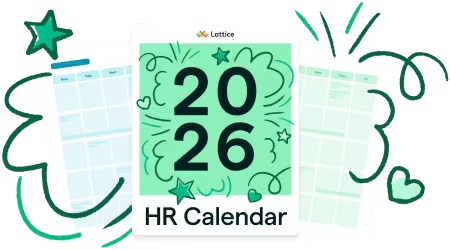With a fast-growing global team, DECIEM struggled to maintain consistency in reviews and feedback. Lattice gave them a structured, people-first approach that supported career growth while preserving their unique culture.
When I see that almost half of the goals in the system are actually tied to development or personal goals, that is really exciting because that means those conversations are happening with their team, and that their manager supporting that type of growth.

The Challenge
“When I joined DECIEM’s HR team three years ago, there were literally four or five people on it,” says Randa Ashkar, Senior Director of Talent and HR Effectiveness for the company. “Perhaps a year after that, we grew to 18 to 20 people. Today, it’s about 43 people globally. So you can imagine the hyper-growth that we are going through.”
Breakneck growth is not hyperbole for DECIEM, which has hired approximately 900 people in the last two years. That equates to nearly two new hires every working day. “So imagine how much stress there is on the TA team to really deliver – and not just deliver, but get the right talent at the right time while also retaining existing talent,” says Randa.
“We set out to really disrupt the beauty industry,” says Ashley Thompson, DECIEM’s VP of People. And as a disruptor, that means creating an environment that supports creativity, innovation, and out-of-the-box thinking – but also preserving a culture of authenticity and camaraderie, even when the bulk of the workforce is working from home due to Covid-19.
Growing from an informal people ops program to a complex and more formalized ecosystem that supports learning, development, diversity, and more has long been a stated goal of the company. But how do you achieve all that without becoming rigid and boring – the kind of company DECIEM had been founded to compete against?
“We were really trying to encourage people to join us for learning events, to get involved and invested in their own development,” Kristina Tsiriotakis, Senior Director of Organizational Development & Learning for DECIEM says. And while people responded well and had solid levels of engagement in that first year, employees nonetheless seemed a bit confused by it all.
“They would come to us in our surveys asking, ‘How do I connect this to my growth in the organization? How do I understand how my work impacts the business overall?’” Employees wanted to feel like they had a purpose in the organization as well as to know formally how well they were performing within it.
Evaluation
DECIEM was looking for a platform that would give it the opportunity to create formal people programs while retaining its unique, disruptive culture.
“Lattice was simpler than most other platforms,” says Randa of the evaluation process, “and one of our models at DECIEM is doing things simply: Simplicity is beauty. The one-on-one features, for example, really caught my eye, and everything is really centralized.”
Randa says that one feature that got her attention was the ability to use Lattice on multiple platforms simultaneously, including phone and laptop. “You're on a video conversation with your direct report and checking things off in real-time – and both of you can do that. You can leave private notes; you can leave shared notes. It's not to say other platforms couldn't do that, but it seemed simpler and more user-friendly in Lattice.”
“Another thing that meant a lot to us about Lattice was that we shared a vision of performance and engagement,” says Ashley. “And we felt that Lattice had more of that vision than some of its competitors. Some platforms had really strong one-on-one features, and some had really strong engagement programs and analytics. But we felt that Lattice, out of everything we looked at, had the most holistic offering that tied it all together.”
Using Lattice at DECIEM
After rolling out Lattice in 2020, DECIEM quickly rolled out OKRs as one of its first features.
“I've always really liked the OKR format for goal setting because it allows you to think big and stretch,” says Ashley, “but then get more specific into how you want to accomplish something. That ability is important for us because things are always changing quickly.”
Interestingly, almost half of DECIEM’s staff today has goals on Lattice, which are tied to personal development – not business goals. “We know that people have to be able to develop themselves and have that chance for personal growth and personal connection in order to be able to be their best self at work,” says Ashley. “When we launched goal setting, first we started with business goals just to get people into understanding what OKRs and goals are and how to set them. But as we kept going, we introduced developmental goals, personal goals, or human goals, which were really about overall wellness.”
Those goals could be health-related, financial, or something to do with an employee’s relationship – all things that employees set for themselves. “The idea is that you're not just a person who just wants to achieve something in your career; you also are a human being who wants to run a marathon or adopt a pet or start a podcast,” adds Ashley. “We're really happy that people have adopted goal setting overall. But when I see that almost half of the goals in the system are actually tied to development or personal goals, that is really exciting for us, because that means those conversations are happening too with their team or with their manager supporting that type of growth.”
The Impact of Lattice
DECIEM rolled out a program called Human Journeys, based around the key pillars of the Lattice ecosystem, including goal setting, 1:1s, and 360-degree performance review — all aiming to create a culture of continuous feedback. “When it came to goal setting, we wanted to make sure that our people had business goals that were directly linked to the organizational strategy so that every individual could understand how their work drove the mission forward within their team and at an individual level,” says Kristina. “But we also wanted everyone to have a development goal and a learning or a wellness goal.”
Over 80% of the business has used Lattice to set goals, which Kristina says is “huge for us, because in our production environment, some of these teams are 50 or 60 people reporting to one person.” To encourage uptake, DECIEM set up workstations on the production floor to give workers access to the Lattice system, and, says Kristina, “people really got into it. They loved being able to share feedback and share updates. We've done feedback challenges to encourage use throughout the business and consistently receive about 80% completion on our surveys as well. People want to use their voice, which has been amazing.”
“Everything at DECIEM has evolved,” says Ashley, including initiatives around performance reviews, quarterly management updates, and the launch of a social sharing platform where employees can see their achievements shared with the broader organization. “We’re able to pull a lot of those results from Lattice,” she says.
Part of the success of Lattice at DECIEM is clearly owed to its incredible adoption of the goals and performance review systems. Within one year of implementation, 97 percent of employees had completed reviews in full, including feedback from their peers, a self-assessment, and managerial review – and not just office workers, but also retail and production staff, who don’t have regular access to a PC throughout the day.
Recent internal surveys also show that 86 percent of the staff say they feel a family connection with their team and 85 percent say they feel an alignment between their values and the company's values – even in a hybrid working environment. “Those are some great indicators to us that we're focusing on the right things and that people are feeling that sense of culture and connection,” says Ashley.
Kristina chalks up the success of initiatives like these to DECIEM’s collaborative spirit. “We operate as one team and that creates a space for diverse perspectives and counterpoints,” she says. “And we support one another across the many finish lines for projects such as this. It’s a key part of our secret sauce.”
Randa concludes by keeping the focus squarely on DECIEM’s staff. “We have something called the good day,” she says, “which is a paid day to go volunteer at an organization that supports our three sustainability pillars: people, animal, and earth. So again, it's not simply having objectives and goals and all these great OKRs, it's about how you balance life – because we want you to be a healthy human at work. We really want people to take care of themselves first before taking care of the organization.”
Takeaways
- Ease-of-use and simplicity were key factors in DECIEM’s decision to adopt Lattice.
- After a year, 97% of workers had completed their performance reviews – including retail and production staff.
- Over 80% of the business has used Lattice to set goals, some via workstations set up on the DECIEM production floor to give workers access to the Lattice system.
- DECIEM uses Lattice not just to manage professional goals but encourages staff to use the system to set their own personal goals – and nearly half of the staff do.





%20(1).jpg)

